At a glance
These stories show how our Science Ambassador Fellows are changing student lives by teaching public health. Read their stories and consider how you might make a difference by participating in our program.
Scholarship awarded to Alaskan educator
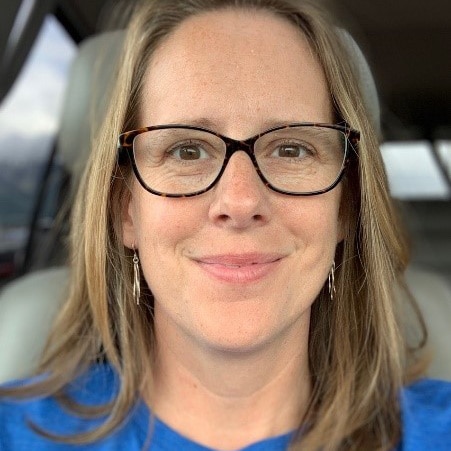
The Sarah Luna Memorial Scholarship was established in 2020 to honor Sarah Luna, PhD. Sarah served as a CDC disease detective in the Epidemic Intelligence Service (EIS) from 2016 to 2018. She was also in U.S. Public Health Service (USPHS). Sarah then became a senior epidemiologist with the Alaska Native Tribal Health Consortium. The consortium is a non-profit tribal health organization. It focuses on the health needs of Alaska Native and American Indian people living in Alaska. When traveling to a rural health clinic in Alaska, her plane crashed. Sarah died tragically as part of her duties in 2019. The scholarship is made possible by her family, EIS classmates, and the EIS program. Each year, the scholarship sponsors a STEM teacher from Alaska to participate in the CDC Science Ambassador Fellowship program.
CDC Foundation presented the inaugural scholarship to Cheryl Williams. Cheryl teaches in the Matanuska Susitna Borough School District in Alaska. She has taught there for over 24 years. Cheryl teaches biology and environmental science. During COVID-19, she taught the importance of public health at all levels. She help find learning experience for her students. Cheryl has been awarded over $50,000 in grants for her teaching.
To be eligible for the scholarship, teachers must meet the eligibility criteria for the CDC Science Ambassador Fellowship. They must also teach grade 6-12 Alaska Native or American Indian youth living in Alaska. To learn more about the Sarah Luna Memorial Scholarship, please contact scienceambassador@cdc.gov.
Alumnus develops pandemic simulation for students
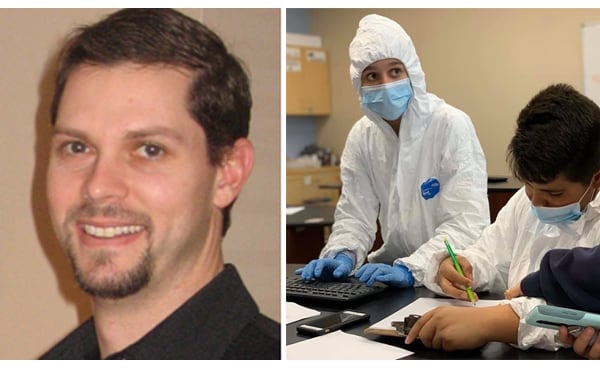
Operation Outbreak gets kids engaged in learning about public health. The pioneer behind this timely mobile app is Todd Brown, PhD, MA. He was an outreach director at Sarasota Military Academy Prep and an alumnus of CDC's Science Ambassador Fellowship (Class of 2019).
As a Science Ambassador Fellow, Todd adopted strategies for weaving epidemiology and public health concepts into the STEM classroom. He collaborated with CDC experts and other fellows to develop a STEM lesson plan focused on disease transmission. Todd's enthusiasm, existing and new skills converged as he aimed for innovative education. During his fellowship, Todd piloted a mobile app-based activity called Operation Outbreak in partnership with Dr. Pardis Sabeti and Dr. Andres Colubri from the Sabeti lab at the Broad Institute of Harvard and MIT. Through a mobile app platform, Operation Outbreak simulates a transmission of an airborne pathogen using Bluetooth technology on participating mobile phones. Participating students were partitioned to serve key roles in government, public health, medicine, the military, and the media. Students found themselves scrambling to adapt and work together in the midst of the simulated pandemic experience. Operation Outbreak was slated to run several more in-person courses in 2020, until an actual pandemic canceled those plans. "The coronavirus is a wake-up call," he said. "We have to be ready for this kind of stuff."
Learn more about Operation Outbreak simulations and student experiences highlighted in the following news stories:
- Operation Outbreak is featured in New York Times' Schools During Coronavirus series as an example of how educators are teaching epidemiology and preparing students for the next pandemic (January 25, 2021).
- The feature story in Your Observer chronicles the stories and experiences of educators and students who took part in Operation Outbreak's first ever in-person simulation (December 12, 2019).
Good Morning America features a fellow and students
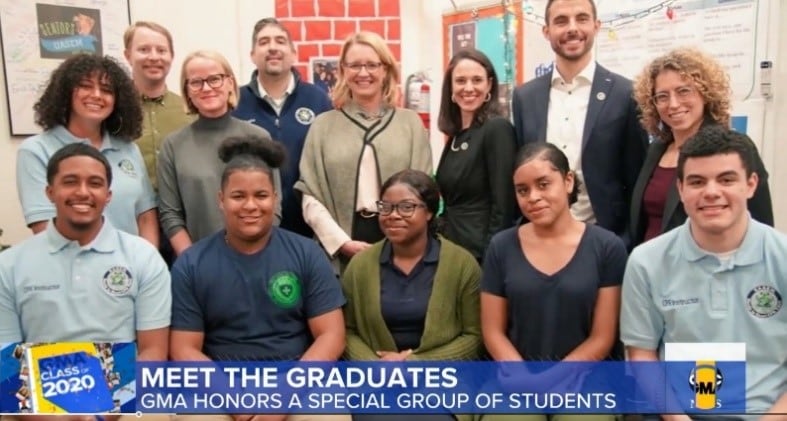
The COVID-19 pandemic transformed 2020 graduation ceremonies. The pandemic didn't stop the 2020 class of the Urban Assembly School of Emergency Management though. They marked their special day with a virtual celebration on Good Morning America. There were 58 graduating seniors at UASEM in New York City. Of those, 29 are certified emergency medical technicians (EMTs). They were eager to begin supporting their communities as newly fledged EMTs.
Emergency Management educator, Sal Puglisi, Class of 2019, was a proud teacher. He drew upon the network and training he's received to keep his students on track. To enhance their training, he integrated timely public health into his lessons.
During the COVID-19 pandemic, educators from Puglisi's CDC Science Ambassador cohort collaborated. They found ways to further enrich their students' learning amid the pandemic. Students simulated responses to disease outbreaks and wrote public service announcements. They also held a virtual student discussion of the global impacts of COVID-19 with each other. These included students of Kathleen Mahoney, an high school epidemiology teacher in Shanghai, China. This collaborative effort was reported on in the NY Daily News and in this video compilation. On Good Morning America, Puglisi praised his students' resilience and dedication to learning during challenging times. The graduates' exposure to public health through Puglisi's class makes their skillset even more unique and relevant during the COVID-19 pandemic.
Learn more about UASEM and the Class of 2020 on the school's website.
Biomedical science teacher develops public health curriculum
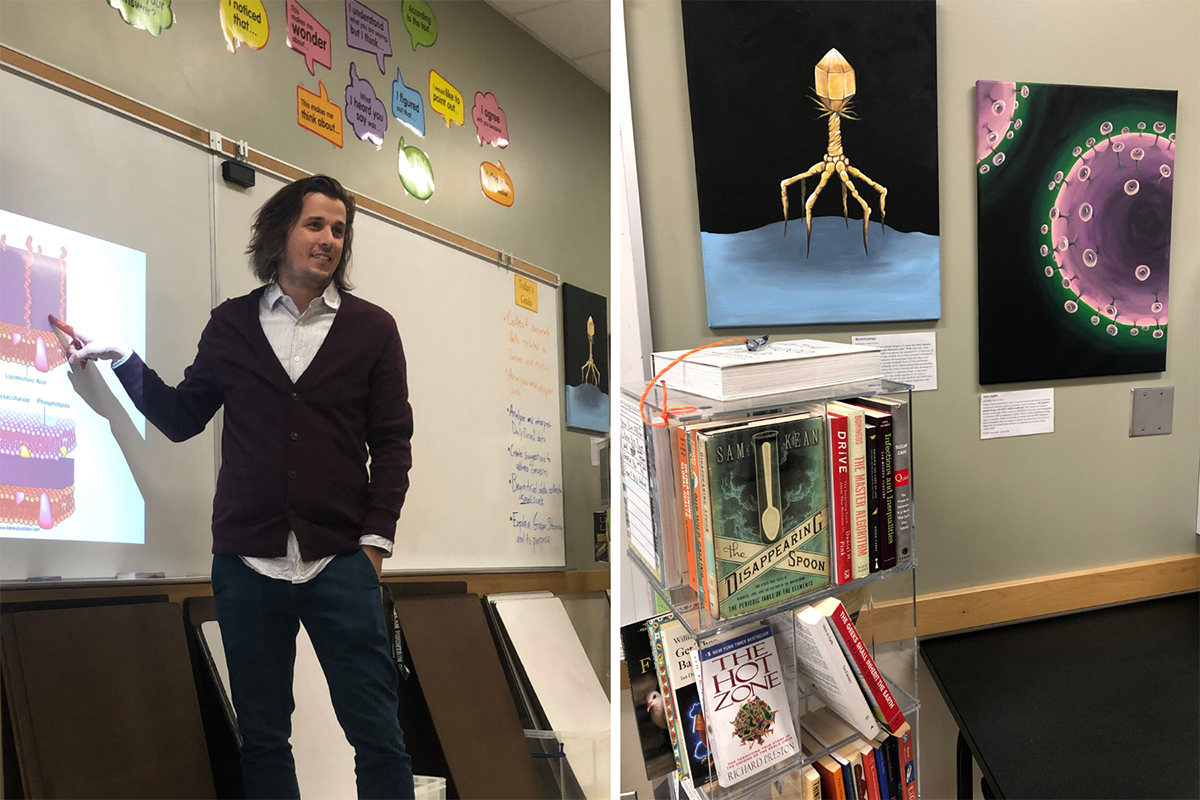
Seth Manthey, PhD is a 2019 CDC Science Ambassador fellow. At the time, he was a Biomedical Science teacher at Chelan High School in Chelan, Washington. He focused on revealing the mysteries behind science and medicine. To do this, he drew from his experiences during the 2019 CDC Science Ambassador summer course. His interactive lessons allowed students to apply their biomedical knowledge to real-world scenarios. Seth was also inspired by the CDC David J. Sencer CDC Museum and the Steven B. Thacker CDC Library tours. He created unique resources for his students. For example, he developed a permanent display and library for his classroom, pictured above. He discussed this work in a radio interview by his local station, KOZI community radio. The painting pictured on the left is a Bacteriophage and on the right is HIV. These resources help students engage with material beyond the classroom. In 2020, Seth served as a peer leader for the 2020 Science Ambassador Fellowship. He shared his success bringing public health to his classroom with other teachers. Peer leaders serve as mentors to new fellows.
High school teacher inspires students' community partnership
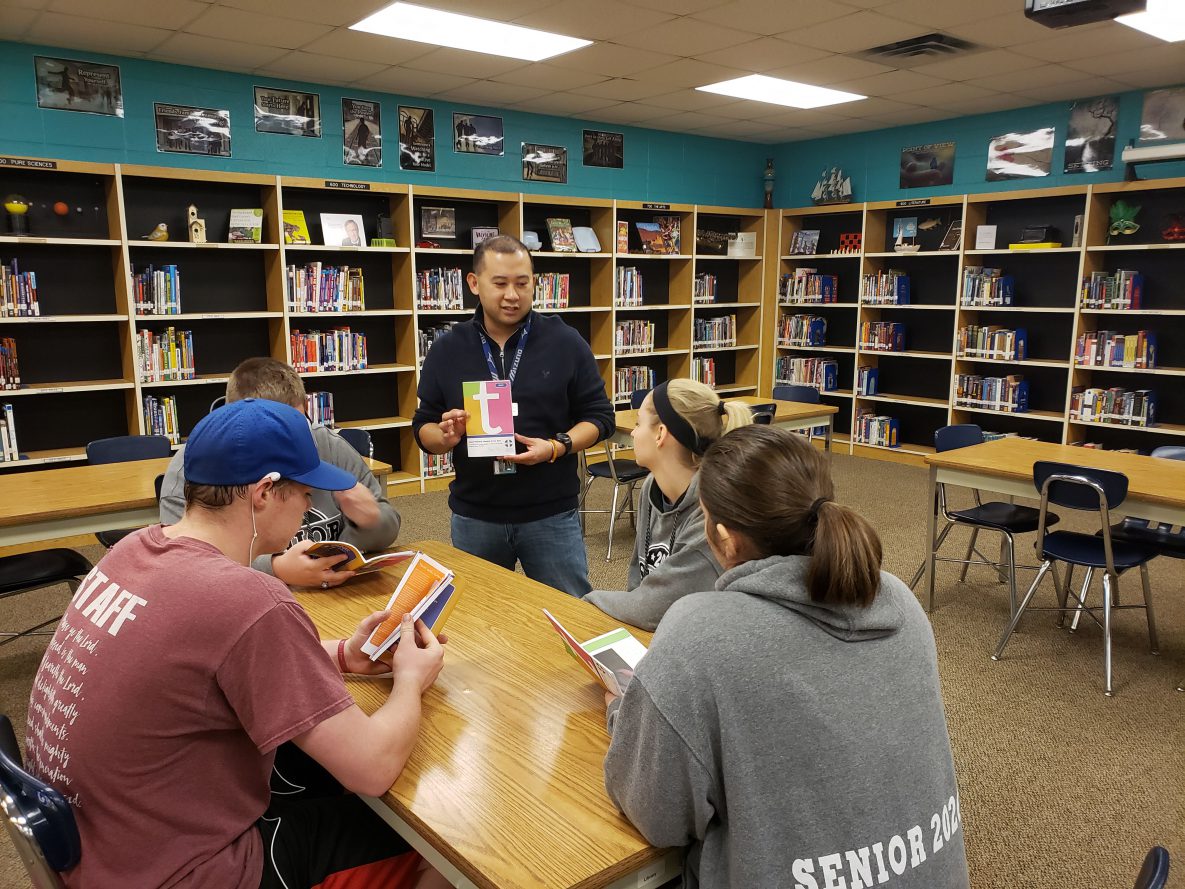
Ryan Lacson, MS, was a 2017 Science Ambassador fellow. He is a high school biology teacher at Galena High School in rural Missouri. To apply what he learned, Ryan teamed up with his county health department. Together, they designed a Biology for Public Health course. It focused on the county's most pressing public health issues. In 2019, his students partnered with a local community organization to further this work. Students trained the high school in teen mental health first aid, leading to six additional area schools hosting the training.
Read Ryan's testimonial about his Science Ambassador Fellowship experience.
